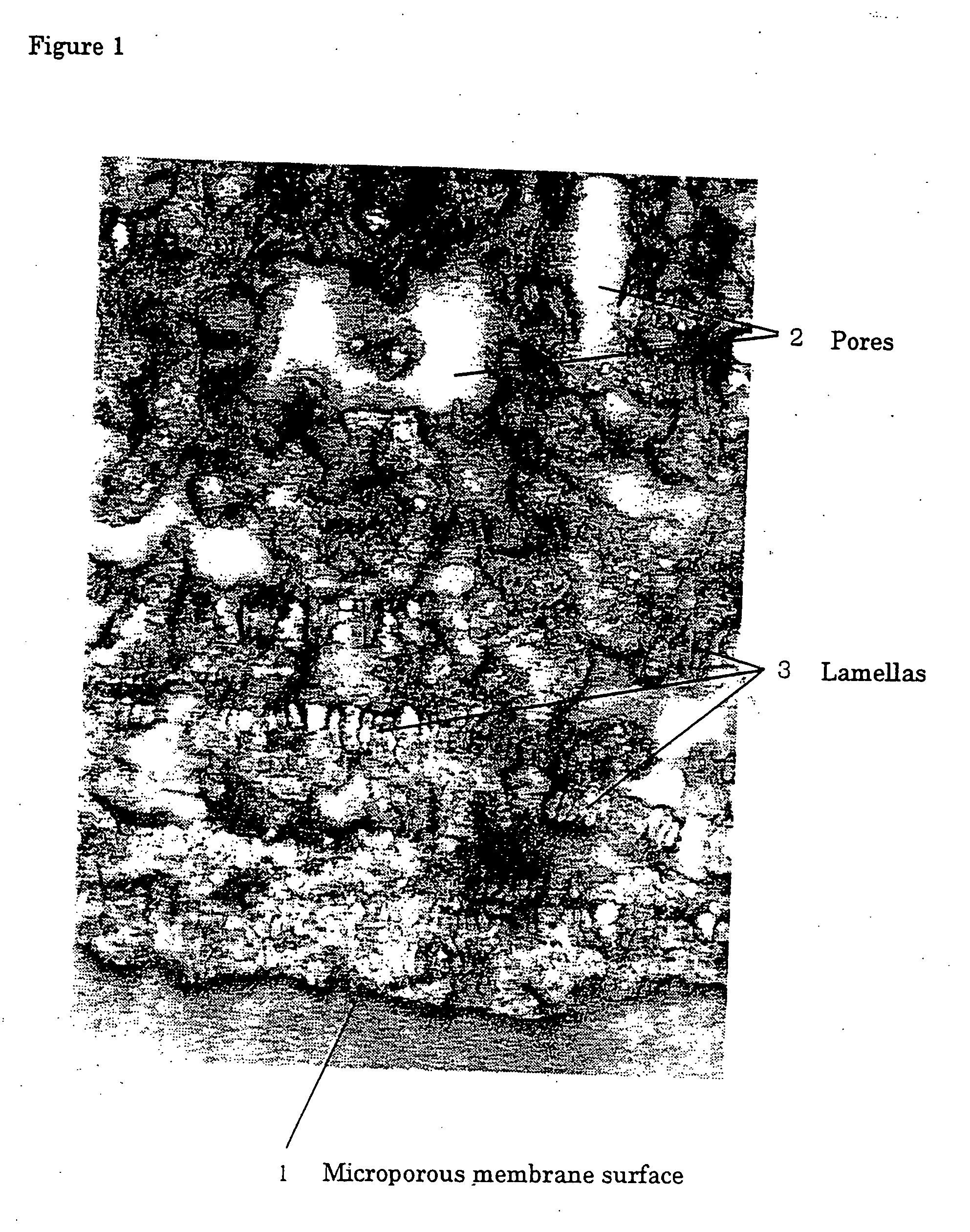Method of producing a microporous polyolefin membrane
- Summary
- Abstract
- Description
- Claims
- Application Information
AI Technical Summary
Benefits of technology
Problems solved by technology
Method used
Image
Examples
example 1
A polyethylene composition (melting point: 135° C., crystal dispersion temperature: 90° C.) having an Mw / Mn ratio of 16.8, composed of 30 weight % of an ultra-high-molecular-weight polyethylene (UHMWPE) having a weight-average molecular weight of 2.5×106 and 70 weight % of a high-density polyethylene (HDPE) having a weight-average molecular weight of 6.8×105 was incorporated with 0.375 weight parts of an antioxidant based on 100 weight parts of the polyethylene composition, to prepare a polyethylene composition. Thirty (30) weight parts of the polyethylene composition was fed to a biaxial extruder (58 mm in diameter, L / D ratio=42, high kneading type), and 70 weight parts of liquid paraffin was also fed to the biaxial extruder from the side feeder, to prepare a polyethylene solution in the extruder by melting the polyethylene composition and kneading it with the liquid paraffin at 200° C. and 200 rpm. The resulting solution was extruded from the T-die attached at the extruder end in...
example 2
A microporous membrane was prepared in the same manner as in EXAMPLE 1 except that it was thermally set at 130° C. for 5 minutes. The properties of the membrane are shown in Table 1.
example 3
A polyethylene composition (melting point: 135° C., crystal dispersion temperature: 90° C.), composed of 20 weight % of an ultra-high-molecular-weight polyethylene (UHMWPE) having a weight-average molecular weight of 2.0×106, 66.7 weight % of a high-density polyethylene (HDPE) having a weight-average molecular weight of 3.9×105 and 13.3 weight % of a low-density polyethylene having a melt index of 2.0 (190° C., 2.16 kg) was incorporated with 0.375 weight parts of an antioxidant based on 100 weight parts of the polyethylene composition, to prepare a polyethylene composition. Fifteen (15) weight parts of the polyethylene composition was fed to a biaxial extruder (58 mm in diameter, L / D ratio=42, high kneading type), and 85 weight parts of liquid paraffin was also fed to the biaxial extruder from the side feeder, to prepare a polyethylene solution in the extruder by melting the polyethylene composition and kneading it with the liquid paraffin at 200° C. and 200 rpm. The resulting solu...
PUM
| Property | Measurement | Unit |
|---|---|---|
| Temperature | aaaaa | aaaaa |
| Temperature | aaaaa | aaaaa |
| Percent by mass | aaaaa | aaaaa |
Abstract
Description
Claims
Application Information
 Login to View More
Login to View More - R&D
- Intellectual Property
- Life Sciences
- Materials
- Tech Scout
- Unparalleled Data Quality
- Higher Quality Content
- 60% Fewer Hallucinations
Browse by: Latest US Patents, China's latest patents, Technical Efficacy Thesaurus, Application Domain, Technology Topic, Popular Technical Reports.
© 2025 PatSnap. All rights reserved.Legal|Privacy policy|Modern Slavery Act Transparency Statement|Sitemap|About US| Contact US: help@patsnap.com


